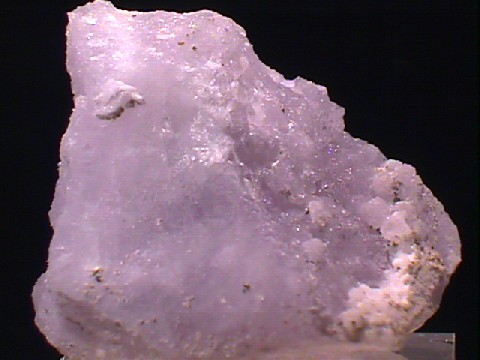 THE MINERAL SUOLUNITE
THE MINERAL SUOLUNITE
- Chemistry: Ca2Si2O5(OH)2 - H2O, Hydrated Calcium Silicate Hydroxide.
- Class: Silicates
- Subclass: Sorosilicates
- Group:Cuspidine - Wohlerite group
- Uses: Only as mineral specimens.
- Specimens
Suolunite is a very rare calcium silicate mineral.
Its relatively simple chemistry defies the rarity of this mineral.
The mineral forms deep within the Earth's crust near the mantle.
Crystals can be colored a beautiful lavender to blue color and specimens are quite attractive.
PHYSICAL CHARACTERISTICS:
- Color is lavender to sky blue, white or colorless.
- Luster is vitreous to adamantine.
- Transparency: Crystals are transparent to translucent.
- Crystal System is triclinic; bar 1
- Crystal Habits include bladed crystals and stellate aggregates and columnar specimens.
- Cleavage is absent.
- Hardness is 3.5
- Specific Gravity is 2.7 (average).
- Streak is white.
- Associated Minerals are
phlogopite,
barite,
apatite,
priderite,
hydroxyapophyllite,
bultfonteinite,
khibinskite,
djerfisherite,
titanite,
monazite,
witherite and
perovskite.
- Notable Occurrences are limited to the type locality from where it gets its name, Suolun, Inner Mongolia, China as well as Black Lake Mine, Coleraine Township, Quebec and Lac de Gras, Northwest Territories, Canada; Kulaski, Bosnia-Herzegovina and Al Khawd, near Masqat, Oman.
- Best Field Indicators crystal habit, color, hardness, cleavage and localities.
 THE MINERAL SUOLUNITE
THE MINERAL SUOLUNITE

